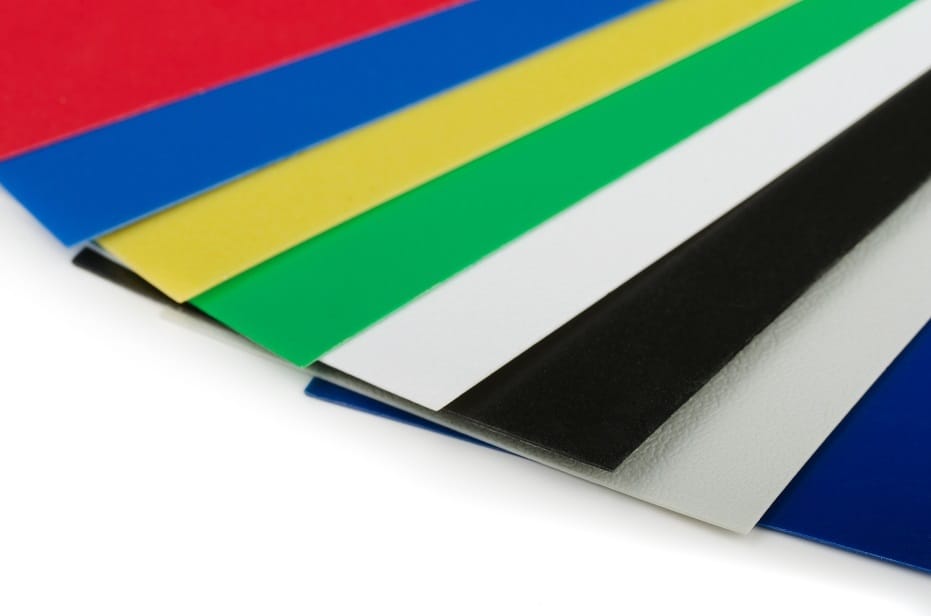Plastics
Plastics are malleable organic materials that can be extruded to form sheets or molded to form more complex shapes. Plastics come in many varieties, from commodity plastics like acrylic and ABS, to engineered plastics like polycarbonate and acetyl. Commodity plastics are inexpensive and have a broad range of applications, while engineering plastics are developed to meet certain performance requirements like high strength or high service temperature. Nearly all plastics can be processed by laser cutting, engraving, and marking. Visit our Materials Suppliers List for plastic vendors.
Types of Plastic
- ABS Plastic
- Acetals
- Delrin®
- POM Plastic
- Acrylic
- Cast Acrylic
- Extruded Acrylic
- Lucite®
- Mirrored Acrylic
- Plexiglas®
- Fluoropolymers
- Microsurface Plastic Materials
- Nylon
- PEEK
- PEI
- Duratron®
- Ultem®
- PLA
- Polycarbonate
- Lexan®
- Makrolon®
- Polyesters
- Dura-Lar® Film
- Ertalyte®
- Metalized PET
- Mylar® Film
- PET Film
- PET-G
- Polyethylenes
- HDPE
- LDPE
- LLPE
- MDPE
- UHMW
- Polyimides
- Cirlex®
- Kapton®
- Kolon Colorless Polyimide (CPI™)
- Polypropylene
- Polystyrene
- Polyurethane
- PPO
- Rowmark® Plastics
- VCF Films
- Vulcanized Fiber
Types of Laser Processes
Lasers are playing an ever expanding role in material processing, from new product development to high volume manufacturing. For all laser processes, the energy of a laser beam interacts with a material to transform it in some way. Each transformation (or laser process) is controlled by precisely regulating the wavelength, power, duty cycle and repetition rate of the laser beam. These laser processes include the following:All materials have unique characteristics that dictate how the laser beam interacts and consequently modifies the material. This is true whether one uses the laser system as a "laser cutter", "laser engraver", or "laser marker". The most common processes for plastics are the following:
Laser Cutting of Plastics
The energy of a CO2 laser beam is easily absorbed by most plastics, causing the material directly in the path of the laser beam to rapidly heat up and vaporize. If the laser power is sufficiently high, the laser beam will cut completely through the material. Most plastics vaporize quickly when cut with a laser, resulting in smooth and straight edges with minimal heat affected zone.
Laser Engraving of Plastics
The power of the CO2 laser beam can be limited so that it removes (engraves) material to a specified depth. The laser engraving process can be used to create intricate patterns and designs into the plastic surface.
Laser Marking of Plastics
Certain plastics change color or hue when exposed to a fiber laser beam. When the surface appearance changes, without any material being removed, the process is termed laser marking. Laser marking can be used to convey information such a serial number or the manufacturer’s logo.
Combined Processes
The laser cutting, engraving, and marking processes described above can be combined without having to move or re-fixture the plastic material.
General Plastic Laser System Considerations
Platform Size – Must be large enough to hold the largest pieces of plastic that will be laser processed or be equipped with Class 4 capability for processing larger pieces.
Wavelength – The 10.6 micron wavelength is absorbed well by nearly all plastics and is the best choice for most plastic laser cutting, engraving, and marking. The 9.3 micron wavelength is a better choice for laser processing certain specialty plastics like PET and polyimide. The 1.06 micron wavelength of the Fiber laser is not useful for laser cutting or engraving plastics, but it is ideal from laser marking certain specialty plastics like acetyl and ABS.
Laser Power – Must be selected based on the processes that will be performed. 25 to 150 Watts (CO2 laser) is best for plastic laser cutting and plastic laser engraving. 40 to 50 Watts (Fiber laser) is best for plastic laser marking.
Lens – A 2.0 lens is the best general process lens for plastic laser material processing.
Cutting Table – Supports sheets of plastic for laser cutting.
Exhaust – Must have sufficient flow to remove the gasses and particles that are generated during laser process from the plastic laser engraving, cutting, and marking equipment.
Air Assist – Provides a jet of air near the focal point of the laser to help remove gasses and particles that are generated during plastic laser engraving, cutting, and marking.
Environmental, Health and Safety Considerations for Plastic Laser Material Processing
Laser-material interactions almost always create gaseous effluent and/or particles. The effluent will include various volatile organic compounds (VOCs) and should be routed to an exterior environment. Alternatively it may be treated with a filtration system first and then routed to an exterior environment. Plastics that contain chlorine, such as PVC, should never be laser processed. Plastic combustion is inherent to laser processing and may produce flames. Therefore plastic laser material processing should always be supervised.

